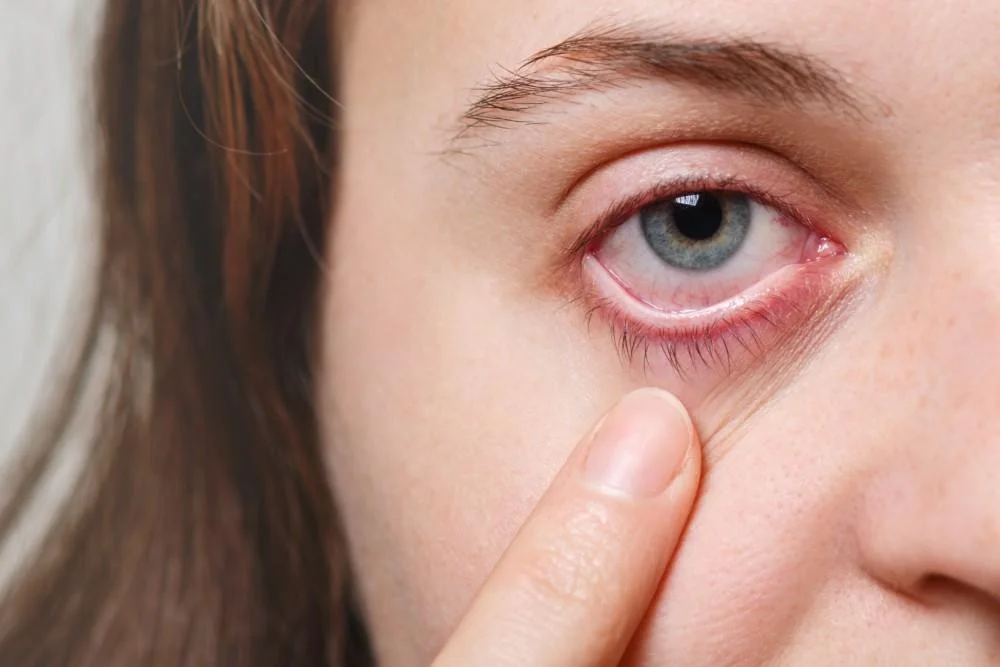A red eye isn’t a normal or healthy eye. Either you’ve somehow irritated your eye, traumatized your eye, or your eye is exhibiting a symptom of a possibly serious and potentially vision-threatening condition.
When the whites of your eyes turn red, our expert ophthalmologist John Ghobrial, MD, at Eye Associates of Monmouth in Colts Neck, New Jersey, can determine why. A red eye is always a sign of something wrong. It could be something minor, such as dry eyes or allergies, but it could be a sign of an eye disease.
If your red eye doesn’t clear within a few days, have a doctor evaluate it. Following are signs that your red eye may be more than irritation and could indicate the presence of a serious eye condition.
Your eyes hurt and you have trouble seeing
One of the most dangerous eye diseases that cause red eyes is acute angle-closure glaucoma. This type of glaucoma can cause blindness within just a few days if it isn’t immediately treated.
With angle-closure glaucoma, the iris of your eye prevents your eyes from normally draining fluids. The fluids quickly build up, causing pressure inside your eye that can permanently damage your optic nerve. If your optic nerve is damaged, you lose your sight.
Whether you have a red eye or not, if you notice any of these symptoms of angle-closure glaucoma, get to the emergency room as soon as possible:
- Red eye
- Eye pain
- Dilated pupil
- Blurry vision
- Sensitivity to light
- Seeing halos around objects
- Nausea and vomiting
Once you’re in the ER, a doctor can relieve the pressure in your eye with medication or surgery. Done in time, these measures can preserve your sight.
Your eye is swollen or has a white spot
Retinoblastoma is a type of cancer that affects your eye’s retina. Usually, it affects infants and children, but in rare cases, adults develop it, too. You may develop retinoblastoma in one or both eyes. In addition to a reddened eye, retinoblastoma causes symptoms such as:
- White color in the center of the eye
- Eyes that seem to look in opposite directions
- Swollen eyes
- Poor vision
If you suspect retinoblastoma, consult an ophthalmologist immediately. Because retinoblastoma is a type of cancer, it can spread to other areas of the body if it’s not treated in time. Another form of cancer that sometimes causes red eyes is lymphoma.
You have itchy eyes or a rash
Lupus is an autoimmune disease that attacks the entire body, including your skin and eyes. If your red eye is due to lupus, you may also notice changes to your eyelids and the skin around your eyes. In addition, your eyes may be dry and itchy.
Additional signs and symptoms of lupus related to your eyes include:
- Whites of your eyes turn red
- Painful eyes
- Gritty, burning eyes
- Excess watering
- Blurred vision
You may also have other symptoms of lupus, such as a butterfly rash that spreads across your nose and cheeks.
You have high blood pressure or diabetes
Sometimes called the “silent killer,” hypertension, or high blood pressure, often has no symptoms. However, one hallmark of the potentially life-threatening condition is red eyes.
When your blood pressure is too high, the vessels in your retina stiffen and harden. They start to cross over one another because they don’t have enough space, and this can lead to blood leakage that turns your eyes red. The buildup of pressure in your eyes can cause blurred or distorted vision.
If you have diabetes, you must be extra vigilant with your eye health. Diabetes destroys your blood vessels, including the vessels in your eyes, which may lead to blindness. Be sure to get regular diabetic eye exams to preserve your vision.
Don’t ignore a red eye that doesn’t go away. Contact our knowledgeable team at Eye Associates of Monmouth over the phone or via our online appointment request tool to get an expert diagnosis and treatment for your red eyes today.


